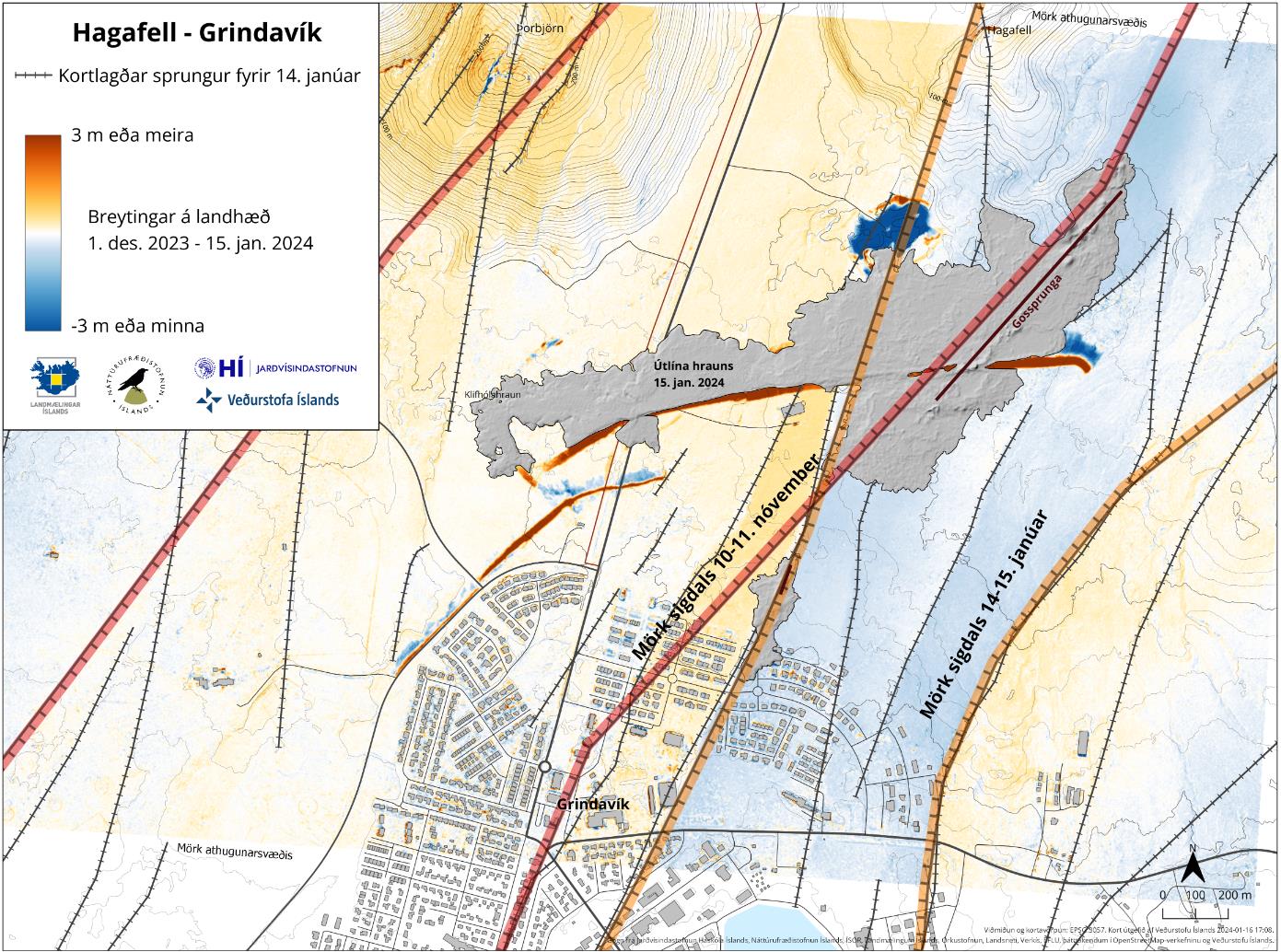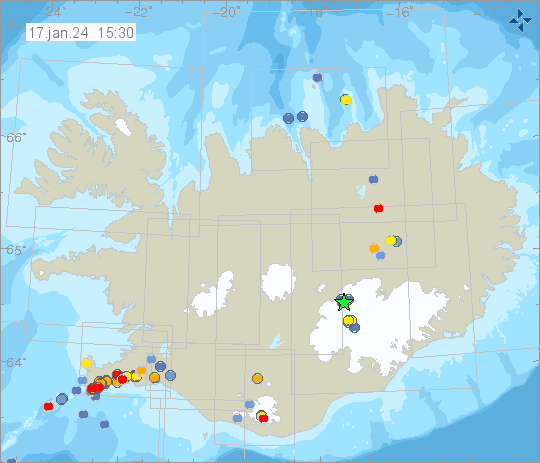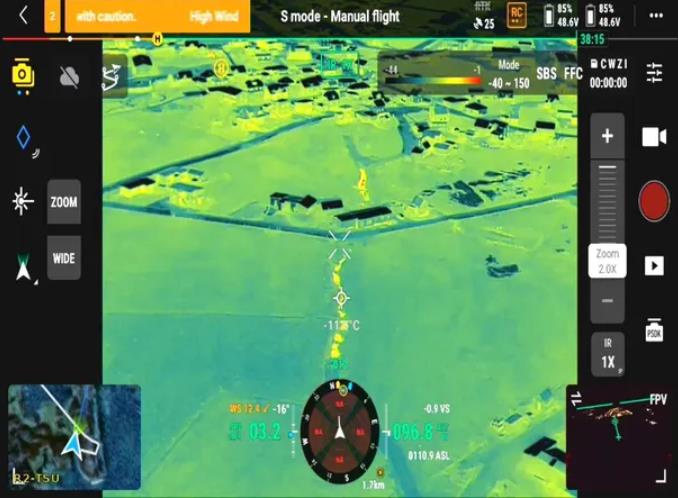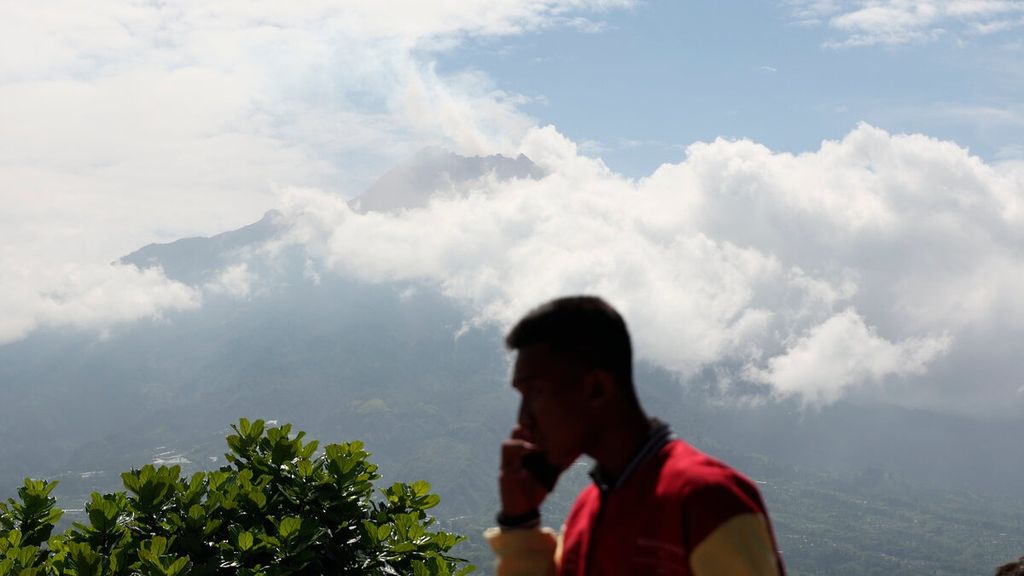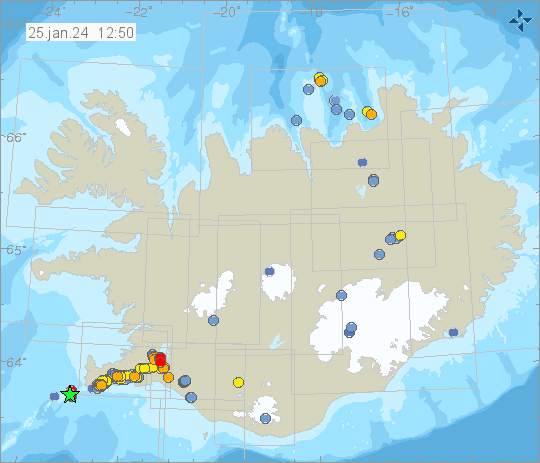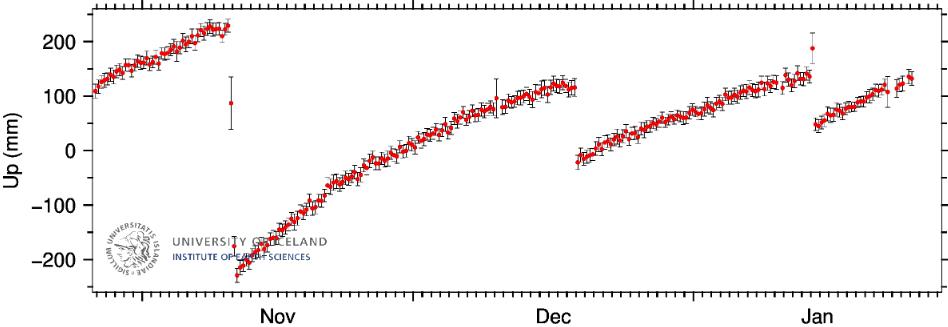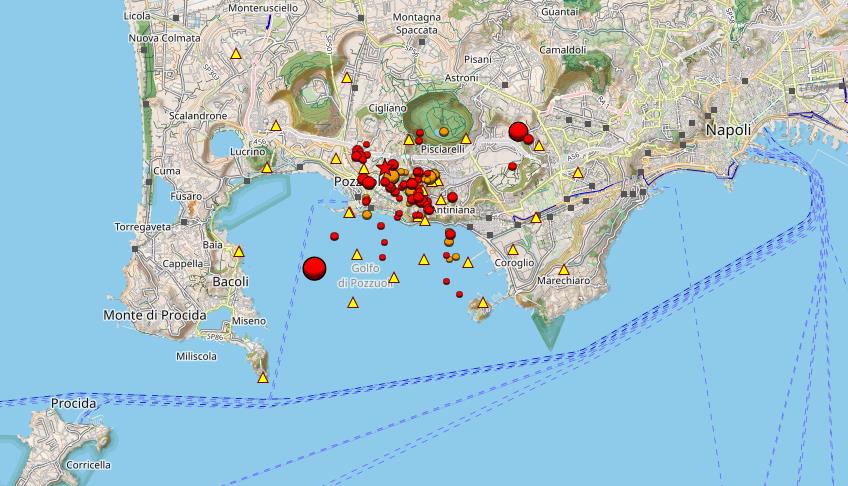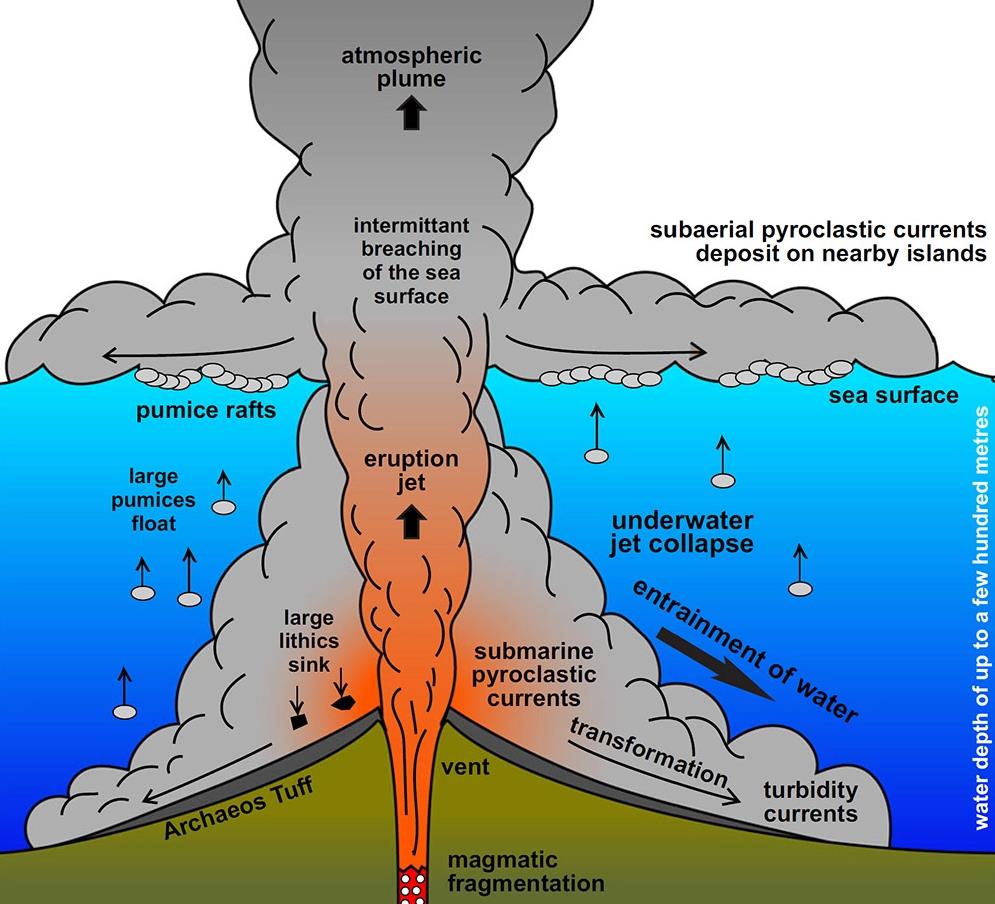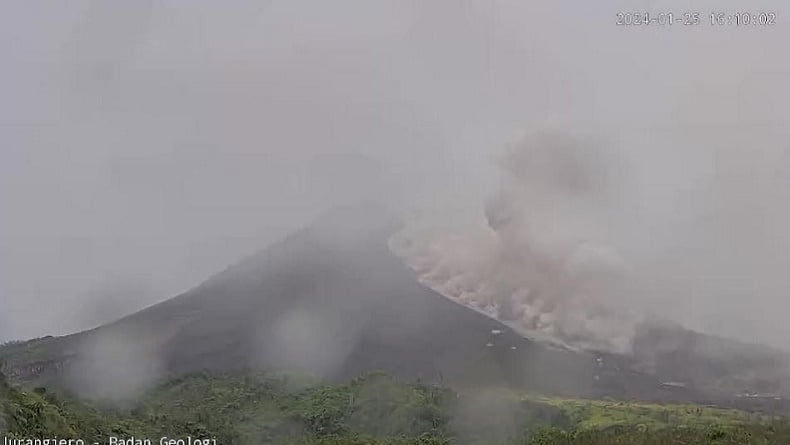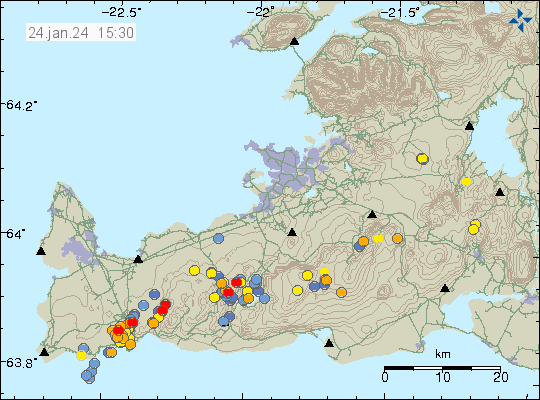XPan
The Living Force
Grindavík, Iceland
16 Jan 2024
This time an article from German Vulkane.net - translated into English.
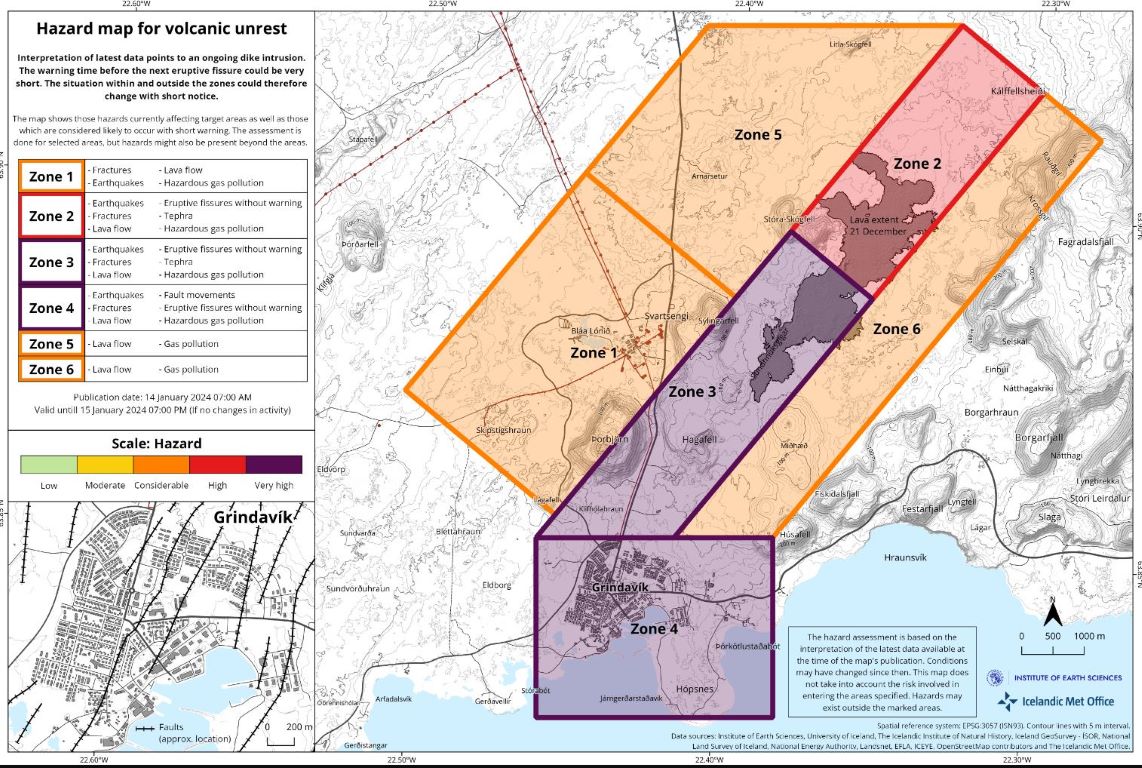
Iceland: New hazard map on 16 Jan 2024
After the eruption is before the eruption - New hazard map from IMO
It looks as if the eruption that began on the Icelandic peninsula of Reykjanes on Sunday is already over. But the short-lived episode brought little relief to the subsurface, so it is expected that the superficial calm will not last long.

Yesterday evening, IMO issued an unusually long statement.
It states that the threat situation has been reassessed and a map has been released. It shows that Grindavik is now back in the area with the highest danger level. In the course of the eruption, the subsurface moved particularly strongly here, and while the underground magma movements along the newly intruded magmatic vein had come to a standstill everywhere yesterday evening, magma movements were still detected under Grindavik.
During dyke formation and eruption, the ground in Grindavik sank by up to 140 cm. New fissures opened up and existing ones enlarged. I think it is possible that not only fresh melt was erupted from the fissure on the edge of the town during the eruption, but also melt that had already intruded there on 10 November. Perhaps analyses of lava samples will provide more precise information in this regard.

A map from IMO
also shows that the dam apparently functioned and diverted the main lava flow away from the city. If this lava flow had marched through Grindavik, the discussions about the fate of the settlement would probably have largely ceased. Personally, I think it is already sealed now, because even if the houses are not eaten away by new lava flows, the subsoil is so unstable that it is no longer possible to live here permanently with a clear conscience.
Countless boreholes would have to be sunk to uncover hidden cavities, so it would seem more sensible to rebuild the city elsewhere or abandon it altogether. Of course, if safety standards are disregarded, it might be possible to live there again in a few years' time.
At the moment, however, it does not look like the general situation will ease in the long term, as the ground at Svartsengi continues to heave and magma is rising from the depths. In contrast to the previous two events, the ground there has hardly subsided. Either the intrusion of the new vein did not originate from here or it was too small to have lowered the ground significantly.



END OF ARTICLE
16 Jan 2024
This time an article from German Vulkane.net - translated into English.

Island: Neue Gefahrenkarte am 16.01.23 - Vulkane Net Newsblog
Es sieht so aus, als wäre der Ausbruch, der am Sonntag auf der isländischen Reykjaneshalbinsel begann, bereits wieder vorbei.
www.vulkane.net
Iceland: New hazard map on 16 Jan 2024
After the eruption is before the eruption - New hazard map from IMO
It looks as if the eruption that began on the Icelandic peninsula of Reykjanes on Sunday is already over. But the short-lived episode brought little relief to the subsurface, so it is expected that the superficial calm will not last long.
Yesterday evening, IMO issued an unusually long statement.
It states that the threat situation has been reassessed and a map has been released. It shows that Grindavik is now back in the area with the highest danger level. In the course of the eruption, the subsurface moved particularly strongly here, and while the underground magma movements along the newly intruded magmatic vein had come to a standstill everywhere yesterday evening, magma movements were still detected under Grindavik.
During dyke formation and eruption, the ground in Grindavik sank by up to 140 cm. New fissures opened up and existing ones enlarged. I think it is possible that not only fresh melt was erupted from the fissure on the edge of the town during the eruption, but also melt that had already intruded there on 10 November. Perhaps analyses of lava samples will provide more precise information in this regard.
A map from IMO
also shows that the dam apparently functioned and diverted the main lava flow away from the city. If this lava flow had marched through Grindavik, the discussions about the fate of the settlement would probably have largely ceased. Personally, I think it is already sealed now, because even if the houses are not eaten away by new lava flows, the subsoil is so unstable that it is no longer possible to live here permanently with a clear conscience.
Countless boreholes would have to be sunk to uncover hidden cavities, so it would seem more sensible to rebuild the city elsewhere or abandon it altogether. Of course, if safety standards are disregarded, it might be possible to live there again in a few years' time.
At the moment, however, it does not look like the general situation will ease in the long term, as the ground at Svartsengi continues to heave and magma is rising from the depths. In contrast to the previous two events, the ground there has hardly subsided. Either the intrusion of the new vein did not originate from here or it was too small to have lowered the ground significantly.
Grindavík: the city continues to deform!
The eruption of Grindavík continues to weaken steadily and only a very small portion of the main fracture to the north of the protective barriers remains active at this time. Its end seems near, but the effects it is causing on the surrounding environment are far from over. During the afternoon, the Icelandic authorities entered Grindavík to assess the changes that the city has undergone as a result of this new dyke, which has also affected the city itself and deformed it very significantly.
Somewhat like what had already happened on 10 November, over the past 48 hours the ground in Grindavík has undergone a major deformation that has caused large cracks to open up in several areas of the city. The cracks that had formed two months ago and had been partially repaired in some cases have reopened and widened, causing new damage to roads and water and heating pipes (which remain out of use). A rescuer who was carrying out one of these inspections saw the ground suddenly collapse under his feet, fortunately without consequences, unlike the man who had fallen into one of these cracks before the eruption began (and was never found).
END OF ARTICLE

